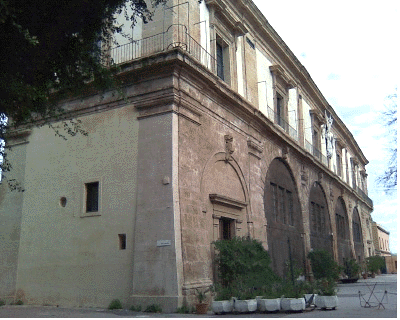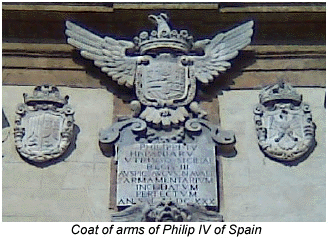...Best of Sicily presents... Best of Sicily Magazine. ... Dedicated to Sicilian art, culture, history, people, places and all things Sicilian. |
by Carlo Trabia | ||
Magazine Index Best of Sicily Arts & Culture Fashion Food & Wine History & Society About Us Travel Faqs Contact Map of Sicily |
As its name implies, it was constructed as an arsenal; more specifically, it was a shipbuilding factory established in 1630 during the reign of King Philip IV of Spain, a Bourbon monarch whose dominions included Sicily. His coat of arms has been preserved on the facade of the building. The facade bears some similarity to other local Mannerist structures erected in Palermo during this period. The architect, Mariano Smiriglio, also designed the four facades of the Quattro Canti and the seaside gatehouse known as Porta Felice at the end of what is now Via Vittorio Emanuele. In the seventeenth century, of course, the shore was much nearer these structures than it is today, having receded over the last few hundred years (the coastline has also been extended intentionally through constructions of piers and extensions). The quay of the Arsenal itself extended only a few hundred feet beyond the facade across what is today a large square and car park. Unfortunately, this area is enclosed and the sea is not visible from the front of the building. Until its partial destruction during the Second World War - there were and still are shipyards in the vicinity - the Arsenal's length extended along four parallel, arched "tubes" where wooden-hulled ships were once built. The masts and other superstructures were completed outside on the quay. During the period of its greatest production the Arsenal was supplied hardwood timber largely from central-Italian localities such as Ascoli. By 1600 there were few hardwood forests left in Sicily, the Aragonese and Spanish kings having depleted the supply during the ship building of previous centuries undertaken without replanting the trees.
The Arsenal's production came to and end during the nineteenth century, when it was put to other uses as a munitions storehouse and prison. Following an extensive restoration, the Arsenal is now an exhibit space and, as a museum, houses a number of cannon and various displays, including a motor from one of Italy's first submarines of the early twentieth century, numerous models of the galleys built here, and other items of interest such as a bell and even an early fog horn. The Bourbon Arsenal is located at the end of Via Cristoforo Colombo (formerly Via dell'Arsenale), which extends toward the shore from Via Francesco Crispi near Via Montepellegrino at Piazza Giachery. It is open Tuesday through Sunday from 9:30 until noon. About the Author: Carlo Trabia is an architect who lectures on architectural history. | |
Top of Page |
 Standing slightly inland
from what used to be the shore, Palermo's Bourbon Arsenal, built
early in the seventeenth century, is a solid and imposing structure even
by modern standards. Today it houses the maritime museum of Sicily's largest
port city.
Standing slightly inland
from what used to be the shore, Palermo's Bourbon Arsenal, built
early in the seventeenth century, is a solid and imposing structure even
by modern standards. Today it houses the maritime museum of Sicily's largest
port city. Nevertheless,
it was here that the galleys were constructed which were used in the battles
against the Barbary pirates fought by the Italians, Spaniards and
Nevertheless,
it was here that the galleys were constructed which were used in the battles
against the Barbary pirates fought by the Italians, Spaniards and